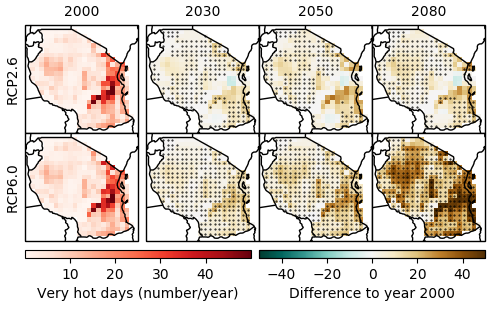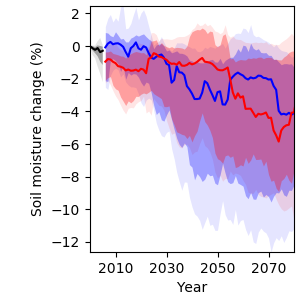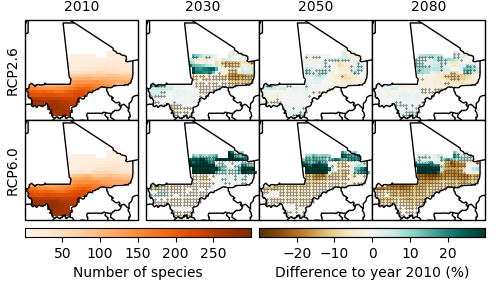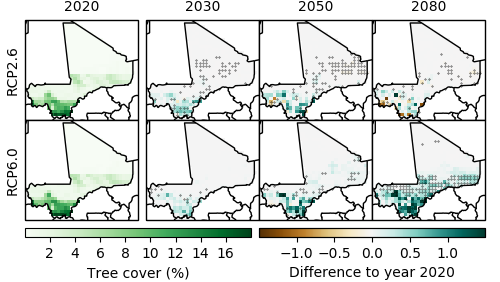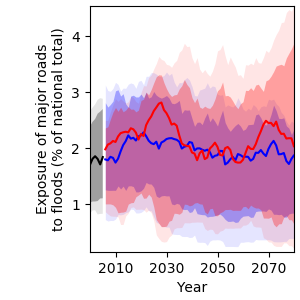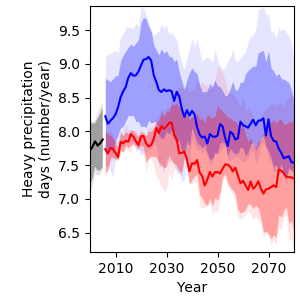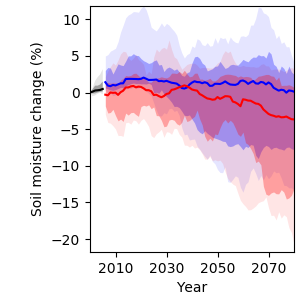Water shortage has been an issue in Tanzania for decades and is likely to continue in the future. Several studies show that climatic changes in Tanzania have resulted in a decrease in total precipitation, a shift of the onset of the rainy season and an increase in the frequency and duration of droughts [14][15]. These changes have materialised, for example, in the extreme decrease of water levels of Lake Victoria and Lake Tanganyika, and the 7-km recession of Lake Rukwa over the past 50 years [16]. Additional challenges related to water availability include an increasing demand associated with agricultural expansion and intensification and with the domestic needs of a growing population [17]. Unreliable precipitation in the highland areas has been the main driver for shifting agricultural production towards lower wetland areas, which offer comparatively fertile soils and year-round water availability [18]. However, the conversion of wetlands in favour of agricultural production has negative trade-off effects on affected ecosystems.
Per capita water availability

Current projections of water availability in Tanzania display high uncertainty under both GHG emissions scenarios. Assuming a constant population level, multi-model median projections suggest no change in per capita water availability over Tanzania by the end of the century under RCP6.0 and only a slight decrease under RCP2.6 (Figure 9A). Yet, when accounting for population growth according to SSP2 projections4, per capita water availability for Tanzania is projected to decline by 76 % under both RCPs by 2080 relative to the year 2000 (Figure 9B). While this decline is primarily driven by population growth rather than climate change, it highlights the urgency to invest in water saving measures and technologies for future water consumption.
Spatial distribution of water availability

Projections of future water availability from precipitation vary depending on the region and scenario (Figure 10). Under RCP2.6, water availability will decrease by up to 25 % in northern and south-eastern Tanzania, with most models agreeing on this trend. The picture for RCP6.0 is different: The model agreement on the direction of change is low for all parts of Tanzania.
4 Shared Socio-economic Pathways (SSPs) outline a narrative of potential global futures, including estimates of broad characteristics such as country level population, GDP or rate of urbanisation. Five different SSPs outline future realities according to a combination of high and low future socio-economic challenges for mitigation and adaptation. SSP2 represents the “middle of the road”-pathway.
References
[14] U. Adhikari, A. P. Nejadhashemi, M. R. Herman, and J. P. Messina, “Multiscale Assessment of the Impacts of Climate Change on Water Resources in Tanzania,” J. Hydrol. Eng., vol. 22, no. 2, pp. 1–13, 2017.
[15] A. E. Majule and M. A. Lema, “Impacts of Climate Change, Variability and Adaptation Strategies on Agriculture in Semi Arid Areas of Tanzania: The Case of Manyoni District in Singida Region, Tanzania,” African J. Environ. Sci. Technol., vol. 3, no. 8, pp. 206–218, 2009.
[16] Vice President’s Office Division of Environment, “National Adaptation Programme of Action (NAPA),” Dodoma, Tanzania, 2007.
[17] K. Velempini, T. A. Smucker, and K. R. Clem, “Community-Based Adaptation to Climate Variability and Change: Mapping and Assessment of Water Resource Management Challenges in the North Pare Highlands, Tanzania,” African Geogr. Rev., vol. 37, no. 1, pp. 30–48, 2018.
[18] R. Y. M. Kangalawe, “Climate Change Impacts on Water Resource Management and Community Livelihoods in the Southern Highlands of Tanzania,” Clim. Dev., vol. 9, no. 3, pp. 191–201, 2017.





